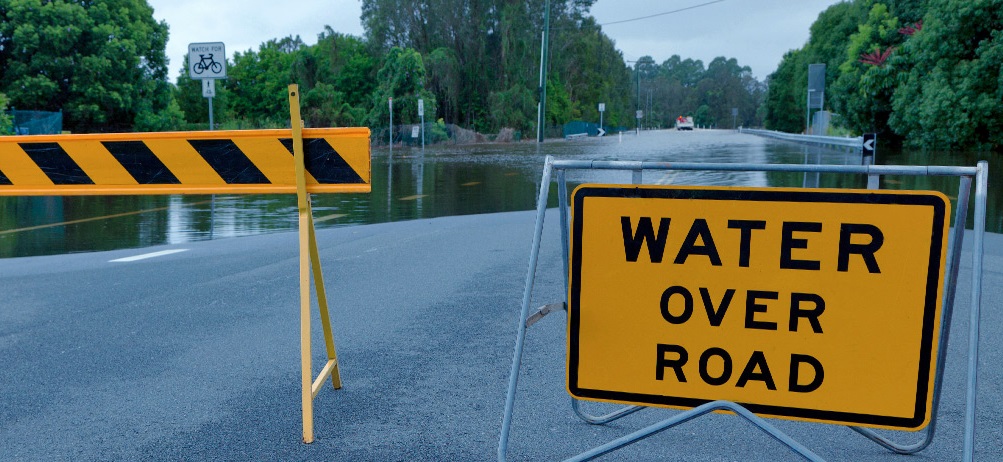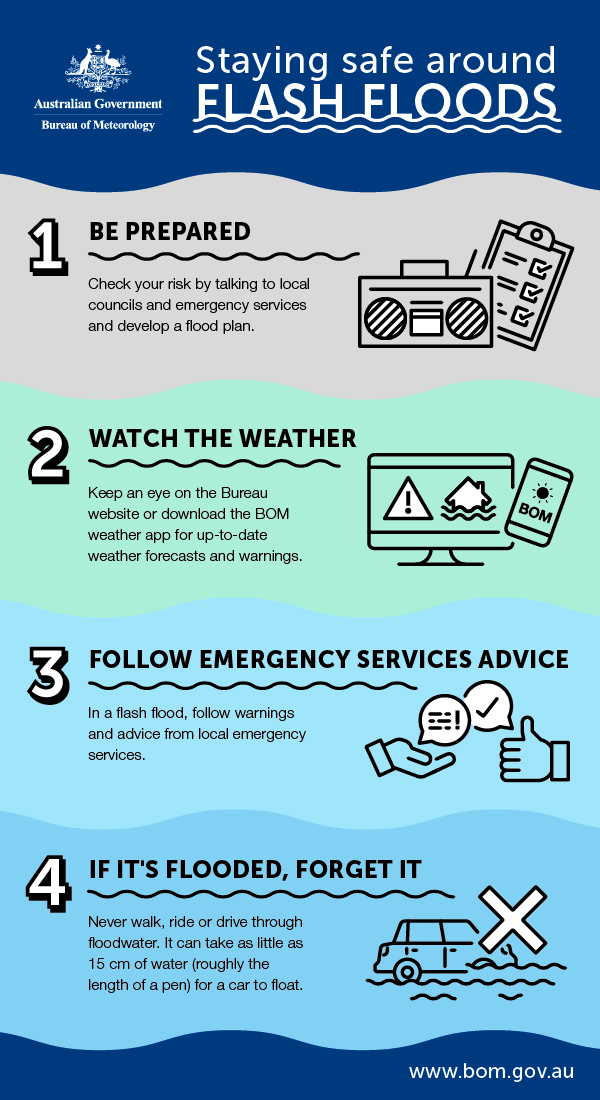Explainer: what are flash floods?
06 April 2018
Flash flooding is a significant threat across Australia. It can cause roads to become rivers, washing away cars and people. And it's not just people living near rivers who are at risk. Flash floods can affect areas away from watercourses and happen with little or no warning. So what causes them and how can you stay safe?
Flash floods are floods of short duration and a relatively high flow that happen within 6 hours of rain falling.
Flash flooding can be divided into two main categories:
- riverine flash flooding – urban creeks and steep rural creeks in the headwaters of river catchments which rise quickly in response to heavy rainfall
- overland flow flooding – intense heavy rainfall in any area which overwhelms the natural or urban drainage system or the ground's capacity to absorb rain.
What causes flash floods?
Flash flooding usually follows short, intense bursts of rain, such as from thunderstorms. The rain falls so quickly that it can't soak into the ground or drain away through normal channels. This can happen anywhere but is a serious problem:
- in urban areas where drainage systems may not cope
- in very small creeks and streams, which burst their banks and inundate surrounding areas.

Image: A road under floodwater. Credit: SES NSW
Why are they dangerous?
Floods are the second-highest cause of natural-hazard related deaths in Australia (after heatwaves). They caused 1942 deaths between 1900 and 2022. Statistics for flash flood deaths aren't available. But given their rapid onset, flash floods are likely to have caused many of these deaths.
A study by the Bushfire and Natural Hazards CRC found that many flood-related deaths are avoidable. Around half involved people trying to walk or drive across a flooded road, bridge or causeway. Most fatalities also involved people trying to get home.
Most rivers in Australia flow towards the ocean. Some do this slowly, through big inland basins, like the Murray–Darling Basin. Others flow straight out to sea, as in many coastal regions. Big rivers can take days or weeks to respond to rainfall. There's time to monitor the situation and warn communities that might be at risk. With flash floods, there's less time between the rain falling and river rising so it may be harder to provide a timely warning.
Who warns you if a flash flood is on the way?
All levels of government work together to prepare communities for flash flooding. But you receive flash flood warnings from your state or territory emergency management agency, or local government.
The Bureau issues flood warnings – but not for flash floods. Our flood warnings cover larger rivers that take more than 6 hours to respond to rainfall. The reason they're treated differently is because the longer lead time enables a different response. We can work with our government partners to:
- collect data
- run prediction models
- interpret flood mapping and determine potential consequences
- issue and communicate warnings.
Flash floods typically happen so quickly that there isn't time to run these processes.
We provide support on flash flooding with:
- forecasts and warnings for severe weather conditions and potential heavy rainfall that can cause flash flooding
- radar, weather forecasts and other data and technical expertise to help emergency management agencies.
We also work with state, territory and local governments to help them to develop flash flood warning systems, through the Flash Flood Advisory Resource (FLARE).
Flash flood safety

More information
Understanding floods (short video)
Understanding flood classifications (short video)




Comment. Tell us what you think of this article.
Share. Tell others.